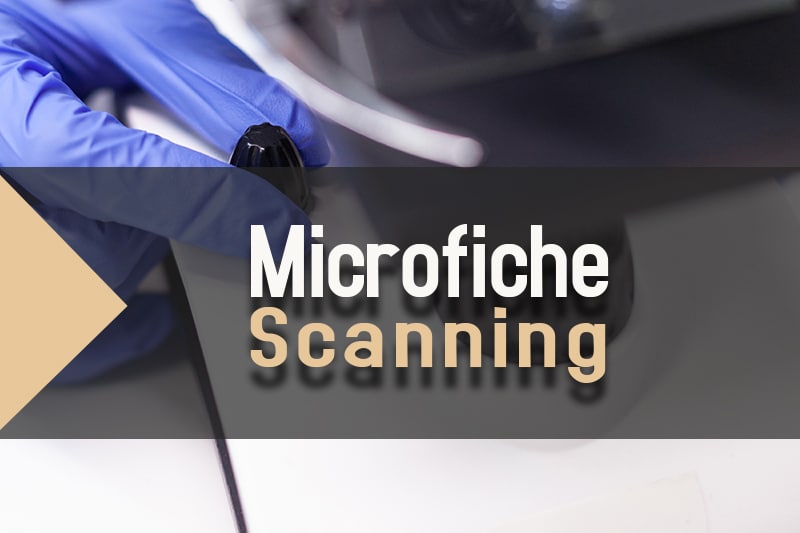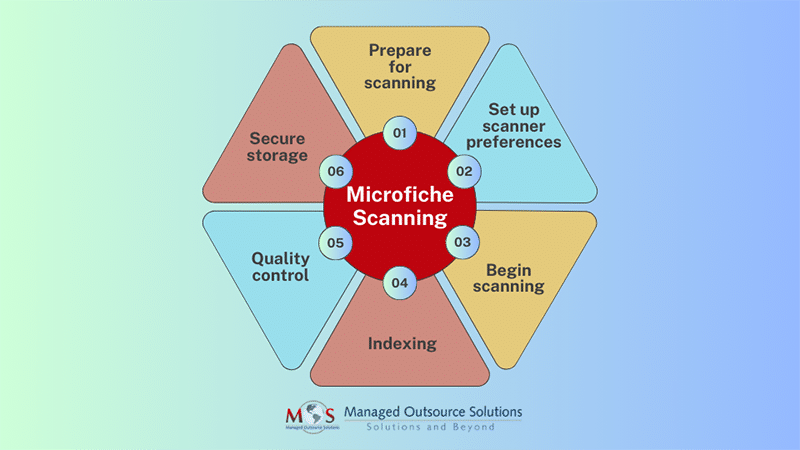Many businesses face challenges when it comes to securely and efficiently storing their documents. While many are now embracing the flexibility of digital storage and conversion, some of them still have a lot of microfiche on hand, which may be the only surviving example of important hard copy paperwork. Due to this, using scanning and conversion methods on this type of document is sometimes met with resistance. However, a trustworthy microfiche scanning service can ensure optimum security along with excellent scanning outcomes.
Significance of Microfiche Scanning
Microfiche, which is simply a photographic negative of any document that is then shrunk in size to conserve storage space, was a perfect substitute for paper for a number of businesses. Microfiche forms have a small physical footprint, and so were considered a simple method for storing and retrieving important data. However, since it has a limited lifespan, it will eventually deteriorate and lose its content. This fading format can be brought back to life with microfiche scanning. Microfiche can be swiftly scanned, and separate files can be formed for each document contained in the Microfiche format, just like with other document scanning processes that can be used to convert standard A4 size paper documents. Modern scanners can handle bulk scanning, making the scanning process as efficient and economical as possible.
Microfiche files can be transformed into any image file format, guaranteeing the highest scan quality and broadest compatibility. This also implies that you won’t need to modify or change the files in any manner in order to share and use them going forward.
Step-by-Step Guide to Scanning Microfiche
Steps to Scan Microfiche
Here are the key steps involved in scanning microfiche:
- Preparing for scanning: Once the microfiche to be scanned is obtained, the next step is prepping. The microfiche is examined for any stains or damage that might interfere with the scanning procedure. To get rid of any dust particles, the microfiche is cleaned with compressed air or a gentle, lint-free cloth. Then the microfiche is positioned on the scanner bed securely and in the correct alignment.
- Setting up scanner preferences: The microfiche scanner’s settings are changed to suit the needs of the client. Depending on the type and quality of information on the microfiche, the file format, resolution, and color depth are adjusted. It is advisable to use higher resolution settings for small-sized and detailed text or images.
- Beginning the scanning process: You can load more than one microfilm sheet at a time, depending on the microfiche scanner’s capabilities. This greatly expedites the digitizing process, but it’s important to keep an eye on the scans in order to identify any potential problems. Microfiche can be scanned into any formats such as TIFF, JPEG, Text Searchable PDFs and so on, depending on the client’s requirements.
- Indexing: Following an evaluation of the image quality, each image is labeled with a key identifier, which will facilitate file location searches by name, ID, or any other desired data. Text can also be extracted and transformed into text searchable metadata using OCR processing.
- Quality control: Throughout the scanning process, the images’ quality is examined to make sure they are clear and sharp. If any problem is identified, it is fixed quickly to save a big batch of rescans.
- Secure storage: Once the microfiche files have been digitized, a safe system must be created for storing and backing up the data. Use redundant backup systems to prevent data loss. You can also consider using an online document storage system to organize and view your files if you want to access the scanned Microfiche papers from anywhere in the world but don’t want to save and store them on your own servers.
Advantages of Microfiche Scanning
- Space Efficiency: Physical storage space devoted to microfiche archives is no longer required thanks to microfiche scanning. Physical office space can be used for other purposes by storing digital material on servers, cloud storage, or other digital media.
- Enhanced Accessibility: Digital microfiche files can be obtained with just a few clicks. Compared to older microfiche systems, where it could take a while to locate and retrieve particular information, this is a huge advance.
- Searchability and Indexing: It is simple to search for and find specific information using indexed and metadata-tagged, scanned microfiche records. This function cuts down the time spent looking for pertinent data and improves efficiency.
- Information Preservation: Scanning microfiches aids in the preservation of important data kept on this storage medium. Compared to traditional microfiche, digital files are less vulnerable to physical deterioration, wear and tear, and damage over time.
- Ease of Distribution: Sharing and distributing digitized microfiche files electronically is a simple process. This eliminates the need for physical transit and makes it easier for departments or organizations to collaborate and share information.
- Savings: There are many ways in which microfiche scanning might save costs. It lowers the chance of information loss due to physical deterioration, cuts down on the time required for manual retrieval, and does away with the expenses related to physical storage.
To discuss your digitization needs and unlock the advantages of digitized microfiche.
As the scanned files maintain their quality and picture fidelity over time, you can be sure that your storage experience will be hassle-free and safe. In order to give your files complete portability, you can also transfer your scanned Microfiche documents to any digital storage device you have, such as a USB pen drive, DVD, or CD. Making additional copies to guarantee the ongoing integrity and safety of your collection is also easier and less expensive than it has ever been with the use of hard copies. Strict quality control procedures are used by reliable microfiche scanning services to manage even damaged films and recover them for effective scanning.





